The Monstera Adansonii has quickly become a fan favorite of houseplants. If you want to learn how to care for this fun, quirky plant, you’re in the right spot! I’m going to teach you all there is to now about the Swiss Cheese plant.
If you’ve been on social media for the last couple of months, you must already have noticed the rise of houseplants’ popularity. While a lot of plants have made their debut on the feeds of countless houseplant enthusiasts, the genus Monstera has taken center stage.
If you’re thinking of adding a Monstera Adansonii to your collection but have doubts on how to care for it, look no further. This guide covers everything you need to know about Monstera adansonii so you can adopt one, care for it, and make it part of your growing collection of houseplants.
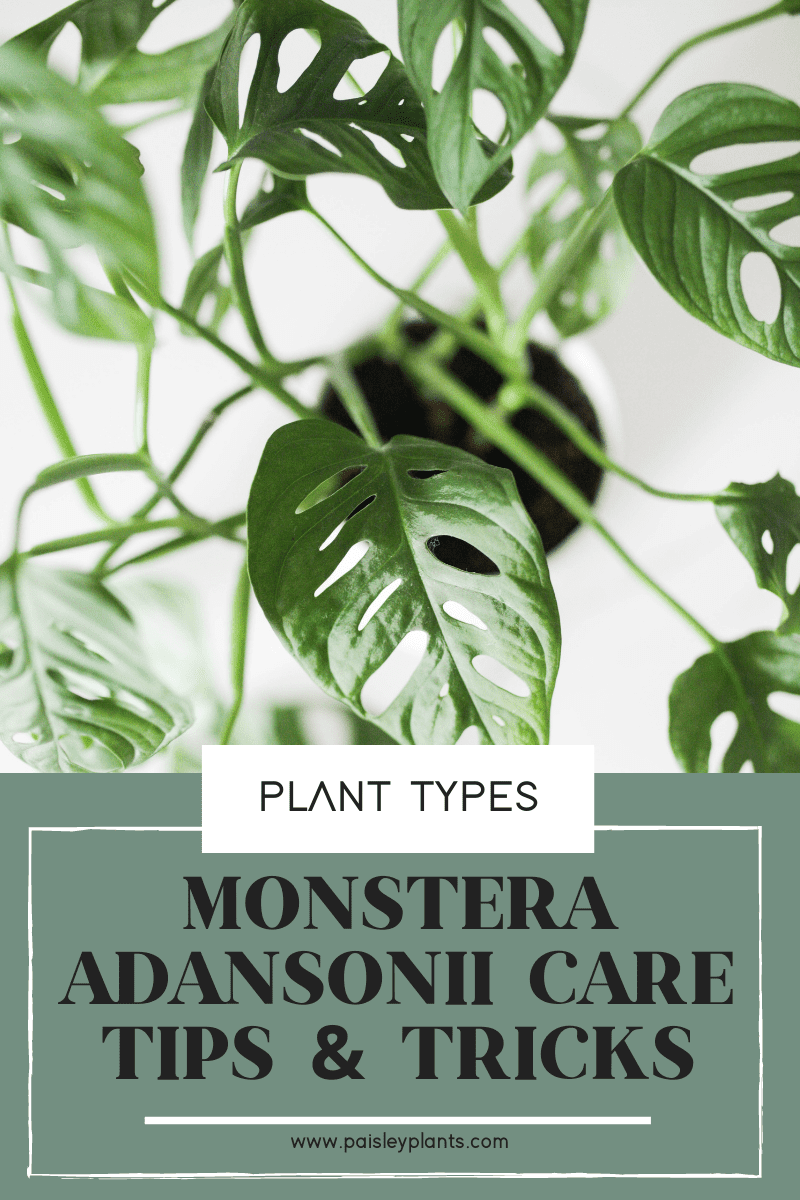
This post includes affiliate links.
Table of Contents
Monstera Adansonii Background/History
The Monstera adansonii plant is native to South and Central America. It is a member of the Araceae plant family. Monstera Adansonii is a tropical plant that is commonly grown as a houseplant.
Instead of developing huge indentations on its leaves like its cousin Monstera deliciosa, these plants develops large oval holes or “fenestrations” upon maturing, similar to the holes in Swiss cheese, hence where it’s nickname came from.
These holes do more than just filter light down to the plant, they also provide the adansonii the capability of resisting high winds by letting the breeze pass through its holes with minimal resistance.
Additionally, the Monstera adansonii leaves retains the full edges so the holes stay holes instead of becoming indentations.
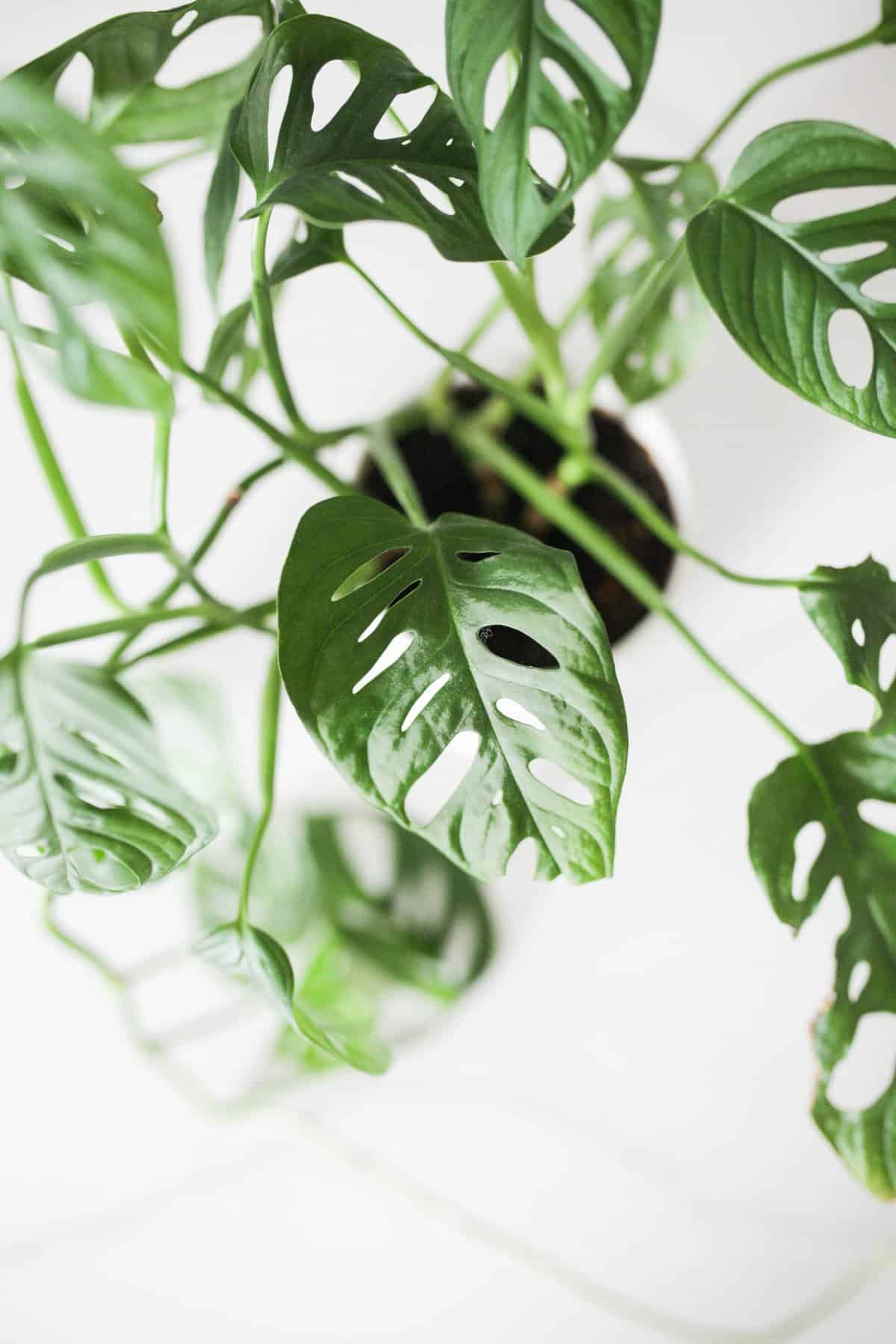
It’s notorious for growing quickly, taking less than 6 months to grow into an impressive height. It also loves to climb! If you want your plant to climb up, provide it with a moss pole or trellis and it will readily wrap itself and grow around it.
Adansonii Common Names
The Monstera adansonii is often called the “Swiss cheese plant” or “five holes plant” because of its big heart-shaped leaves. It also goes by the name “monkey mask” or “Adanson’s monster.”
Natural Habitat
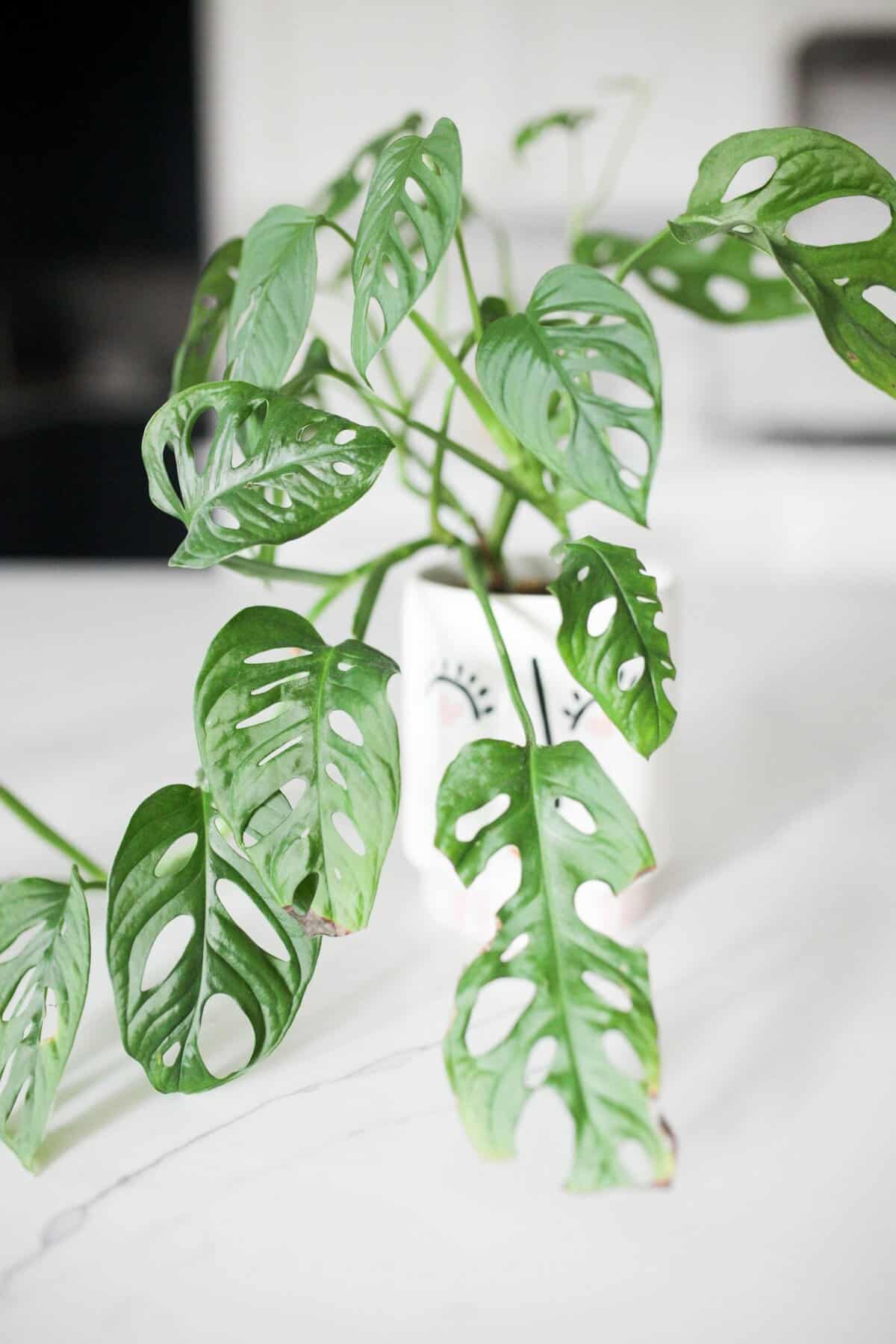
Monstera adansonii plants are flowering aroid plants native to South America and Central America. They’re found on some Caribbean Islands and rely on indirect, bright sunlight.
These plants can be commonly found growing on tree trunks at low altitudes in the deep jungles.
Adansonii Size
Like many aroids, the Monstera adansonii has two types of leaves: juvenile and adult. Adult Monstera adansonii leaves can be as big as 20 to 30 inches. When grown on a trellis, the plant can reach an impressive height of up to 13 feet.
Compared to its cousin, the Monstera deliciosa, Swiss cheese plants don’t become as big making them suitable for smaller spaces. They can be grown indoors and outdoors as long as they have the right environment for growth.
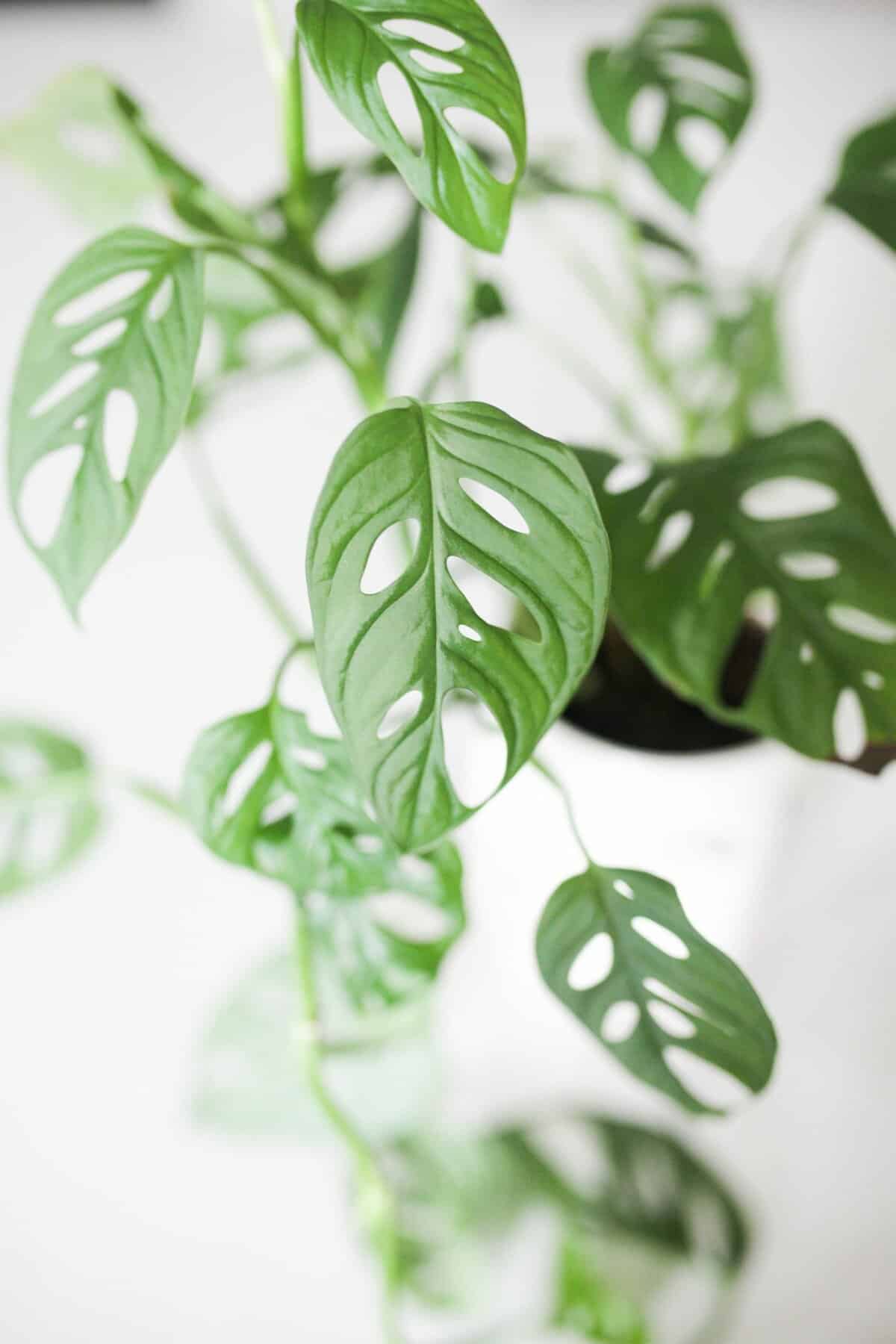
Monstera Adansonii Care Tips
Let’s move on to Monstera Adansonii care tips! Growing these plants isn’t too hard. Here’s what you need to know.
Watering Your Adansonii
Instead of watering the monstera in one go, it’s best to water it in small amounts at a time.
The soak and dry method is known to work better for this aroid plant. Water it, wait until the soil appears to be dry, and then insert your finger into the top inch of soil to test for moisture.
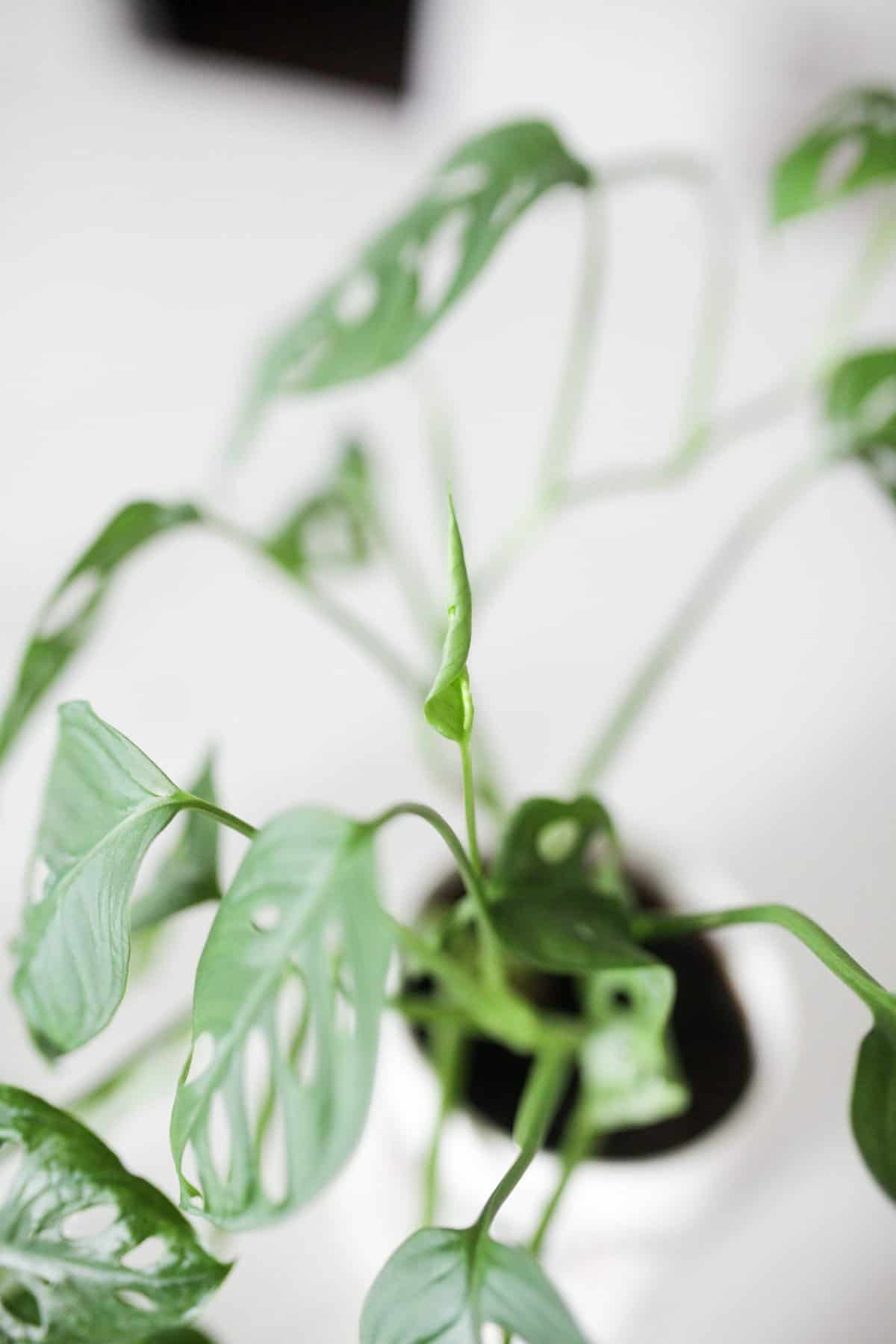
If it’s still dry, add a bit more water, but if it’s already wet, wait! You do not want your plant to live in soggy soil – this is detriminetal to your plant.
As a general rule after you water it, check it again in 7 to 9 days in the warmer months or around 14 to 20 days during winter months. This will depend a bit on where you live and the conditions your plant lives in.
How Do I Know if My Adansonii is Not Getting Enough Water?

Dry soil indicates that your houseplant needs watering. While it’s essential to monitor the watering, you also have to make sure that the plant is not exposed to arid conditions. Remember, it’s used to a damp environment.
Other signs that your plant is getting too much water are leaves that curl inward, a drooping or leaning plant, and the production of leaves without fenestrations.
Leaf discoloration is another sign of an underwatered swiss cheese vine plant. If the leaves turn yellow, brown, or start dying, it can be a cause of concern.
However, underwatering is not the only cause of dead leaves. It could also be due to overwatering, too much sunlight, or the presence of pests.
How Do I Know If My Adansonii Overwatered?
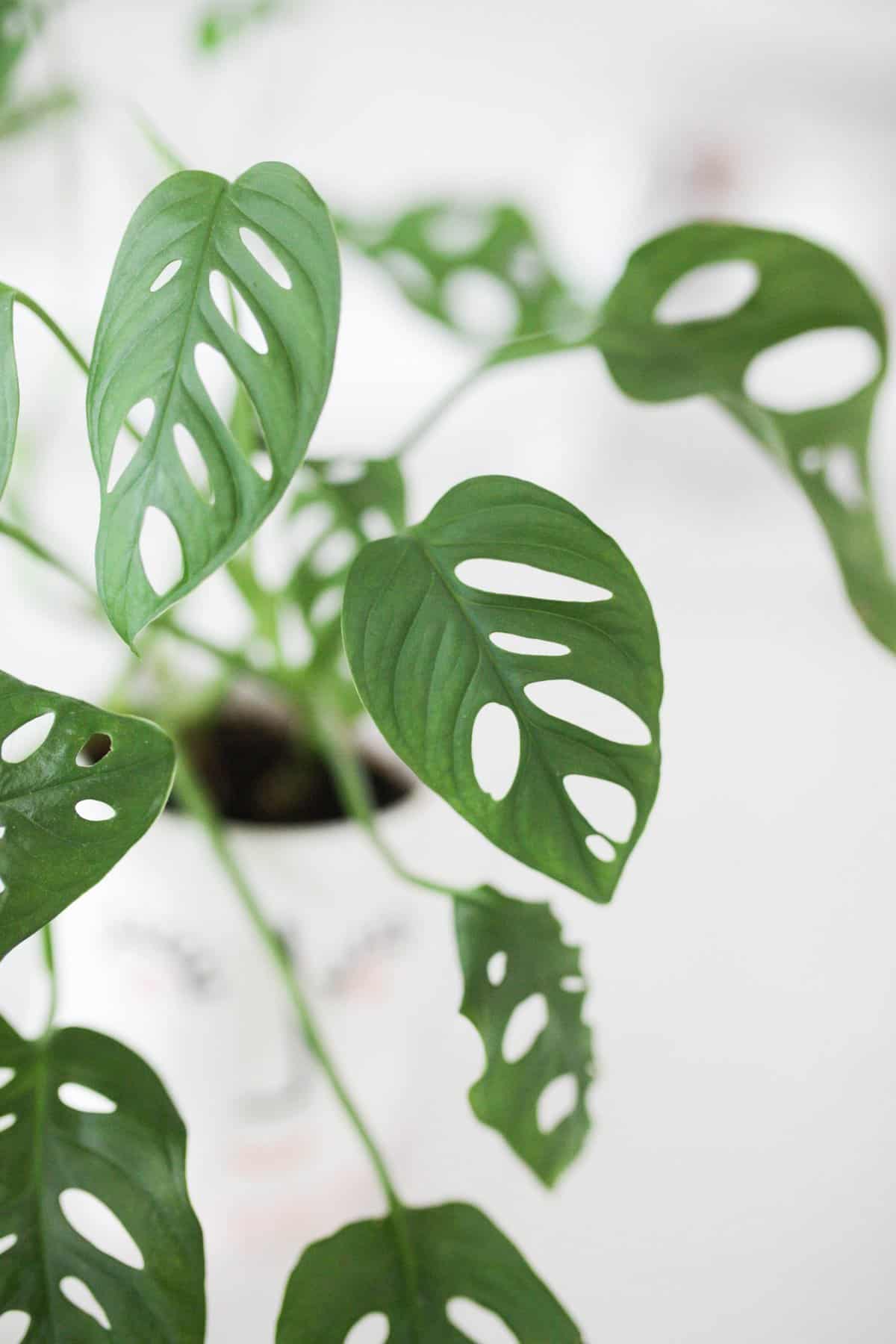
An overwatered plant is just as bad as an underwatered plant. If you notice the leaves of your houseplant yellowing or have signs of lead edema, it’s time to modify when you water your plants.
Excessive water can make the roots suffer, rot, and die. Without a stable root system, your houseplant will die prematurely. Moreover, as the soil retains water, too much water can prevent enough oxygen from reaching the roots, causing issues like root hypoxia.
It’s always better to give less water than too much and keep an eye out for any signs of overwatering. Bringing an overwatered plant back to health is significantly harder than dealing with an underwatered plant.
Adansonii Light Requirements
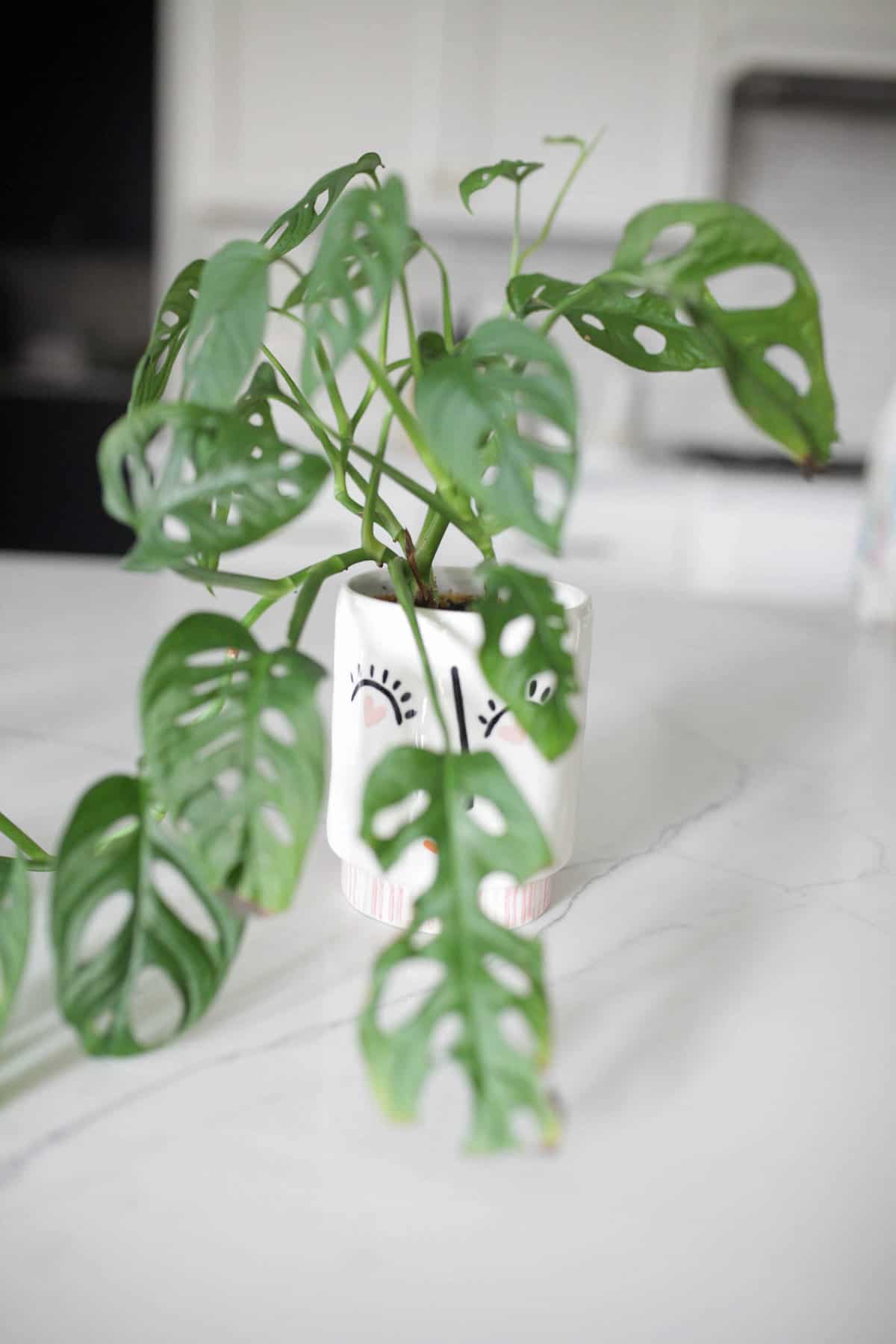
Monstera plants will grow best in a spot that gets bright indirect light. Since the Monstera adansonii’s natural habitats are rainforests and other jungle-like areas, you should keep it away from harsh direct sunlight and direct sun exposure as they can burn the leaves.
You can leave your plant in the shade but be prepared to see significantly stunted growth. For it to flourish, it’s best to place it in lighting that mimics its natural environment. Placing it somewhere with partial shade works well too.
If you don’t have a spot with great light, using a grow light is a great option.
Temperature & Humidity
Low temperatures can damage or even kill your plant so make sure the temperature around your plant is warm at all times.
Although it can survive temperatures as low as 50 degrees Fahrenheit, it grows best in temperatures between 65 to 85 degrees Fahrenheit. I don’t do anything special for my plant with regards to temperature other than leaving it inside year round so it doesn’t get too hot or too cold.
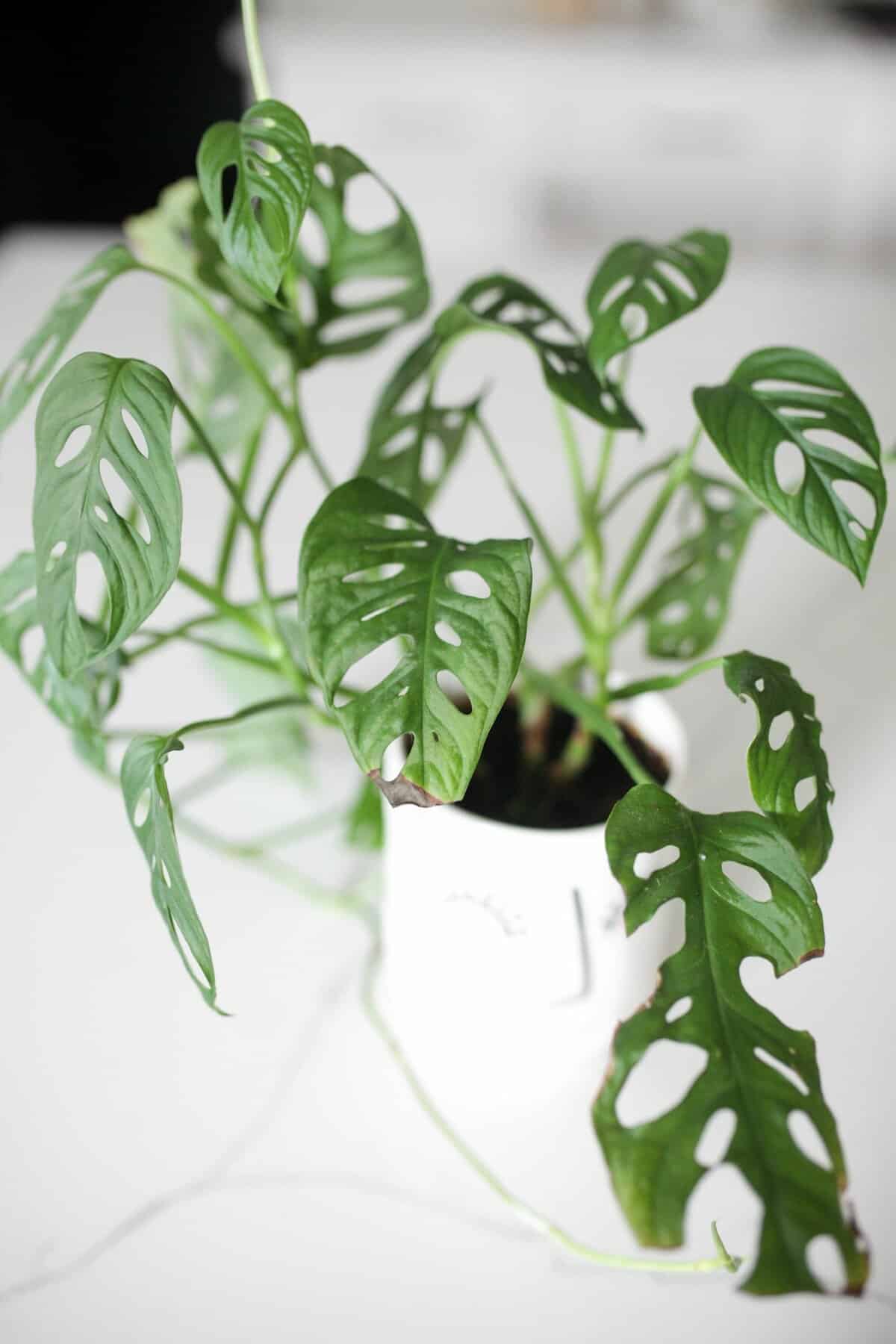
These tropical plants love high humidity – think a bathroom or other humid spot in your home. If you have a humidifier and place your plant near it, your plant will flourish due to increased ambient air moisture.
Another option is to put a plate filled with rocks and pebbles near your houseplant and keep the rocks submerged halfway with water.
Upon evaporating, it will directly increase the humidity around your plant, giving it the perfect environment to thrive. This isn’t something I personally do but if you notice your plant is looking a little sad and wilted, you may want to try increasing the humidity levels!
Soil for Monstera
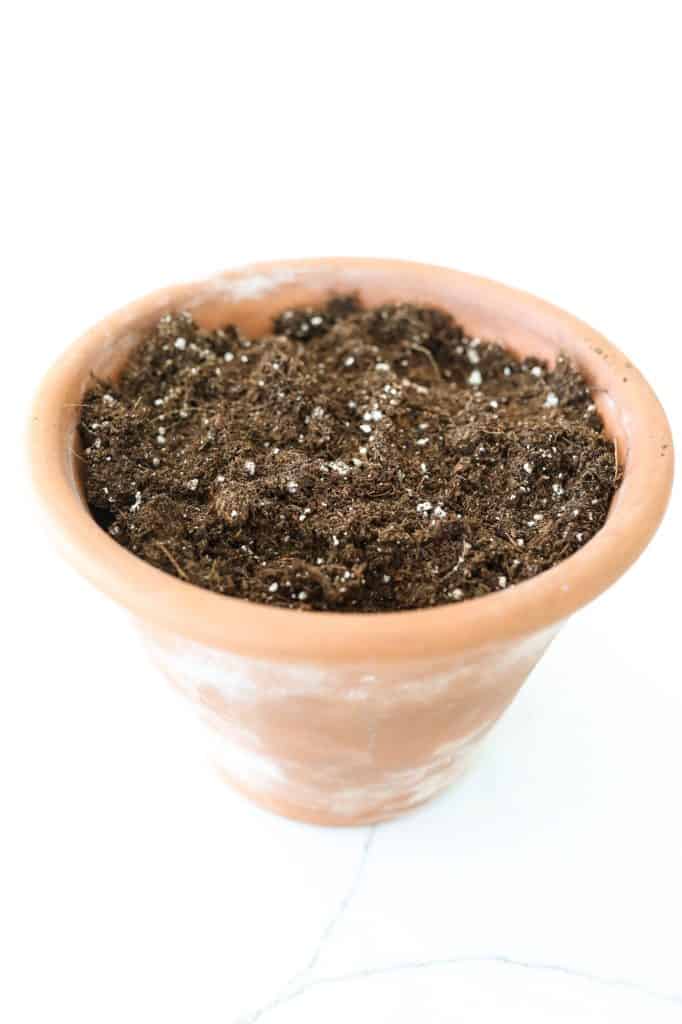
Excessive water retention can do more harm than good for your plant in the long run. It’s super important to watch the moisture retention in your potting mix.
Instead of experimenting with a well-draining potting soil, opt for a high-peat potting mix. Peat moss absorbs its weight in water without becoming waterlogged. It will then distribute the water to the plant as and when needed.
Aim for a pH level from 5.5 to 7.0 as these plants grow better in slightly acidic potting mix. A pot with drainage holes on the bottom of the pot will also be beneficial for your Swiss Cheese vine.
*Find more soil tips on this post!
Monstera Adansonii Propagation
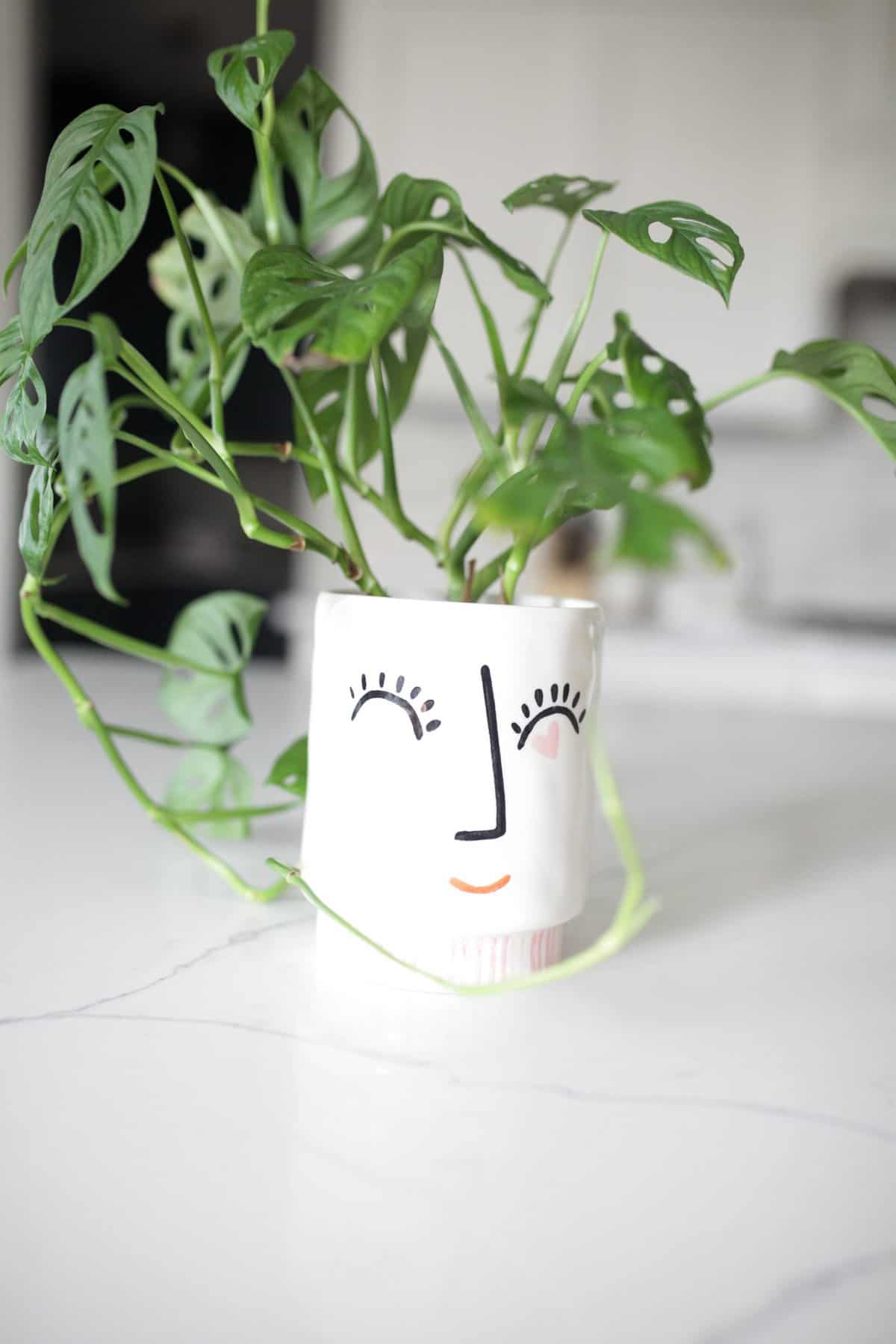
The Monstera adansonii is commonly reproduced through propagation. The best time to propagate your plant is in the spring or summer when it’s in it’s growing season.
The best way to propagate these plants is through it’s aerial roots. Each of its stems develops aerial roots at the nodes. If you cut it just below its visible aerial roots, you can put it in some soil and begin a new houseplant, roots and all.
Of course, there are chances that there may not be any aerial roots visible. In such situations, you can still propagate your plant by planting a cutting with 3 or more nodes along the stem. Here’s what you would do.
How to Propagate Monstera Adansonii Without Aeriel Roots
- Cut a piece of the vine with 2-3 nodes (a leaf node is the brown bump on the stem).
- Remove all the leaves from the bottom part of the stem cuttings, leaving a few leaves at the top.
- (Optional) Dip the bottom of the stem cutting in a rooting hormone.
- Place it in the soil with 1 node submerged.
- Keep the climate humid and the soil moist to facilitate new growth.
I actually prefer to propagate my plants using the water method. So instead of #4, placing it in soil, you would use water. Water propagation allows you to see the roots forming so you know it worked!
Put the cutting in a jar or propagation station of water. You’ll want to switch out the water every week or so to keep it fresh.
You’ll start to see roots forming in a few week to a couple months, depending on the environment. Once roots have formed you can then transfer it to soil. You’ll want to ensure the roots have noticeable growth before potting it in soil, about a few inches.
When doing water propagation, remember that developing new roots takes time and requires patience.
Repotting Your Monstera Plant
Choosing pots for your plants is half the fun of getting a new plant! Given the right conditions, this fast-growing plant will quickly need more space so you may want to transfer it to a bigger pot.
However, if you’re growing it as indoor plants, you can’t afford to let it grow to a disproportionate size.
There’s also an added risk of your plant developing root rot when placed in a too large pot.
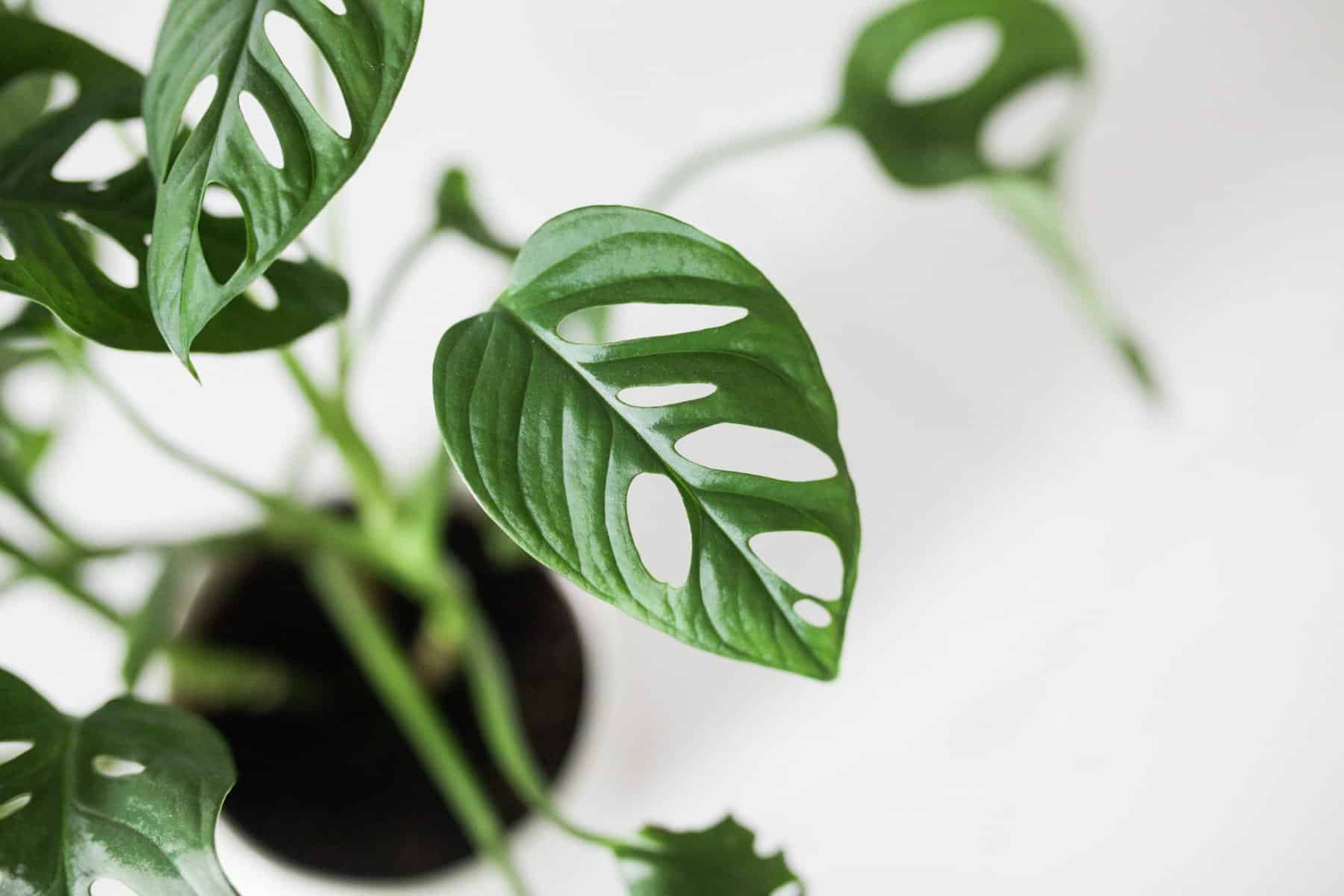
Generally, we like to keep the Monstera adansonii slightly cramped in its pot. But how do you know when the time is ripe for a bigger pot?
Check the bottom of the current pot. If the roots are growing out from the bottom of your pot, it’s time to transfer it to another one, preferably a taller and thicker pot than the last. Make sure that the pot you use has good drainage from the base.
You’ll want to give your Swiss Cheese plant enough room to grow to ensure that root rot doesn’t set in so go a size up when repotting, but don’t transfer it to a pot that’s too big for it either.
Common Pests And Diseases in Monstera Plants
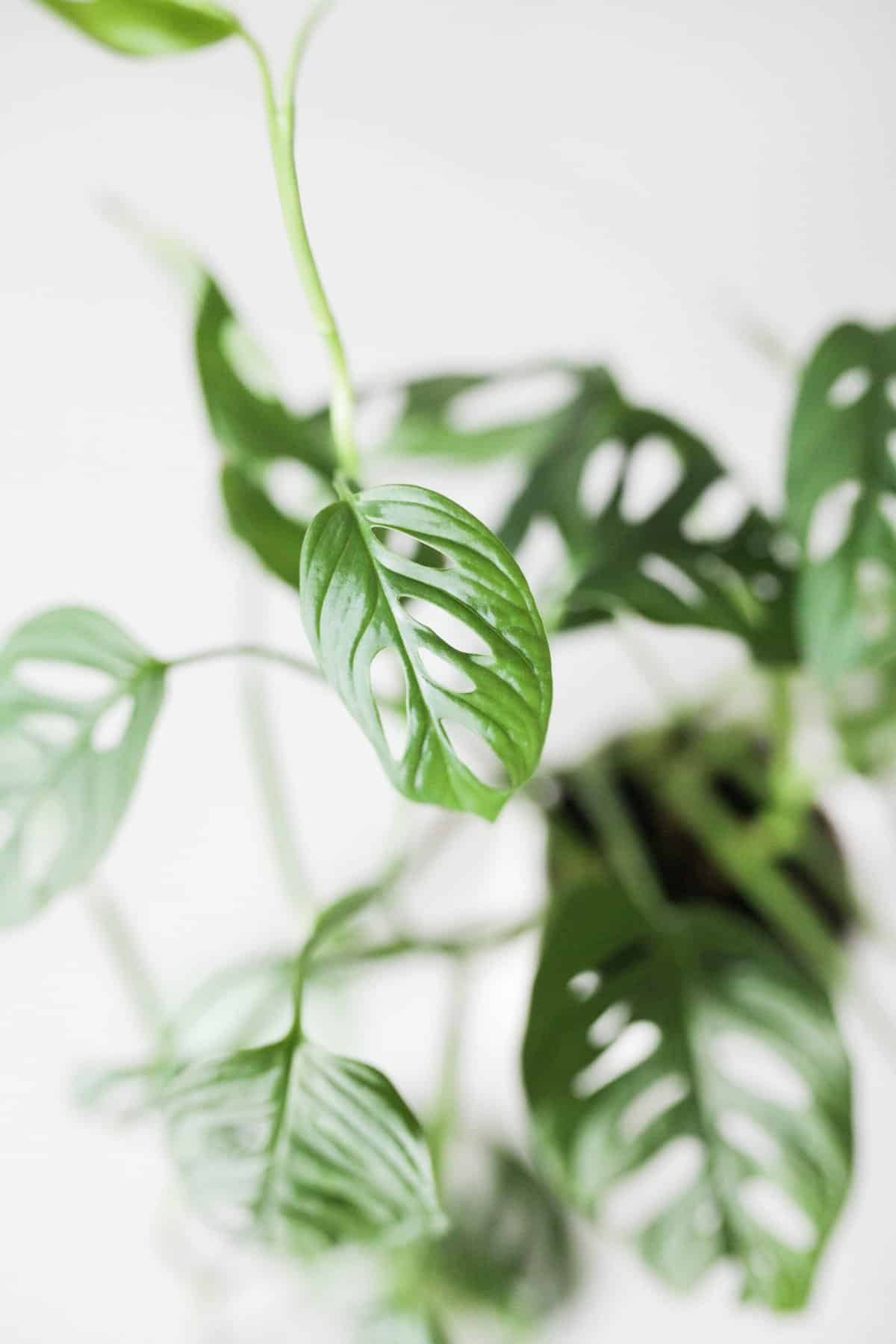
Just like most plants, the Monstera adansonii is susceptible to pests and diseases. Here are common ones with the Swiss Cheese plant.
Pests
Spider mites, mealy bugs, whitefly, and scale insects are some of the most common pests encountered with this plant.
This is what a mealy bug infestation looks like:
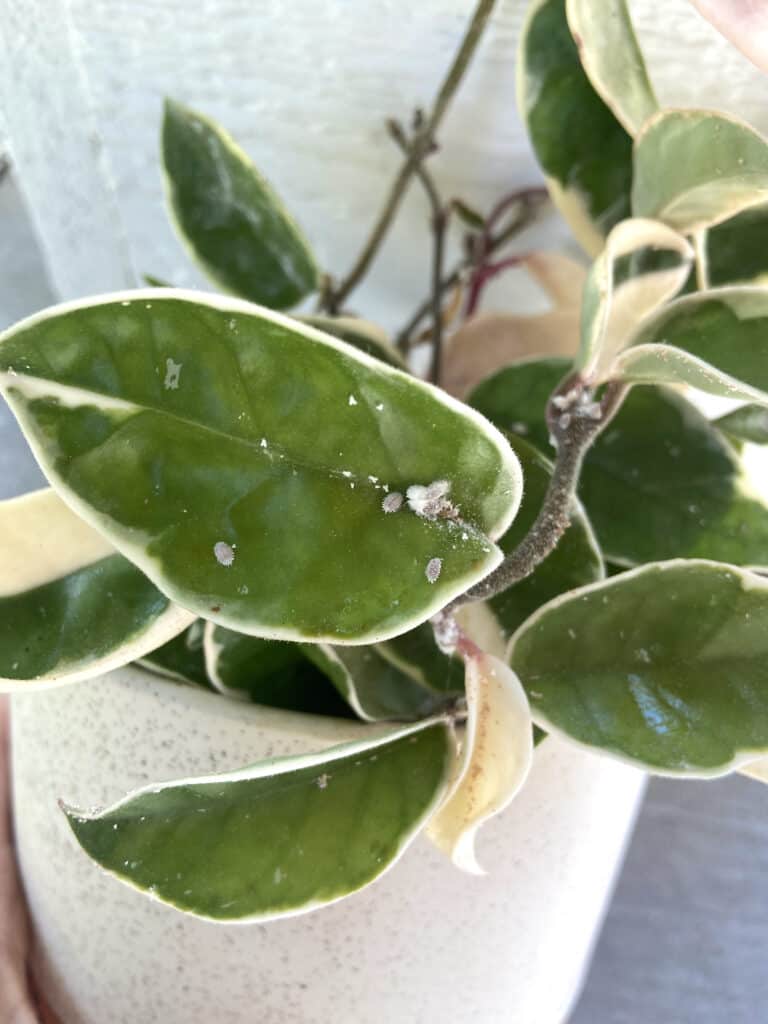
If you have a small colony of insects on your Swiss cheese plant, you can easily remove them by using a cotton swab dipped in rubbing alcohol.
For bigger insect populations and spider mites, spray the leaf surfaces and stems with neem oil. This should get rid of your pest problem. If it does not, you can use a pyrethrin-based organic pesticide to get rid of the little buggers.
Diseases
Monstera adansonii is susceptible to fungi-related diseases. If you notice yellow or brown spotting on the leaf’s surface, take action before it spreads to cover the entire leaf.
Alternaria leaf spot and septoria leaf spot are common variations of fungi that colonize the leaves of your Monstera adansonii. With plants, it’s always better to use organic solutions to rid them of diseases. Bearing this in mind, use a copper-based fungicidal spray to take care of alternaria and septoria leaf spots.
Monstera Adansonii Toxicity
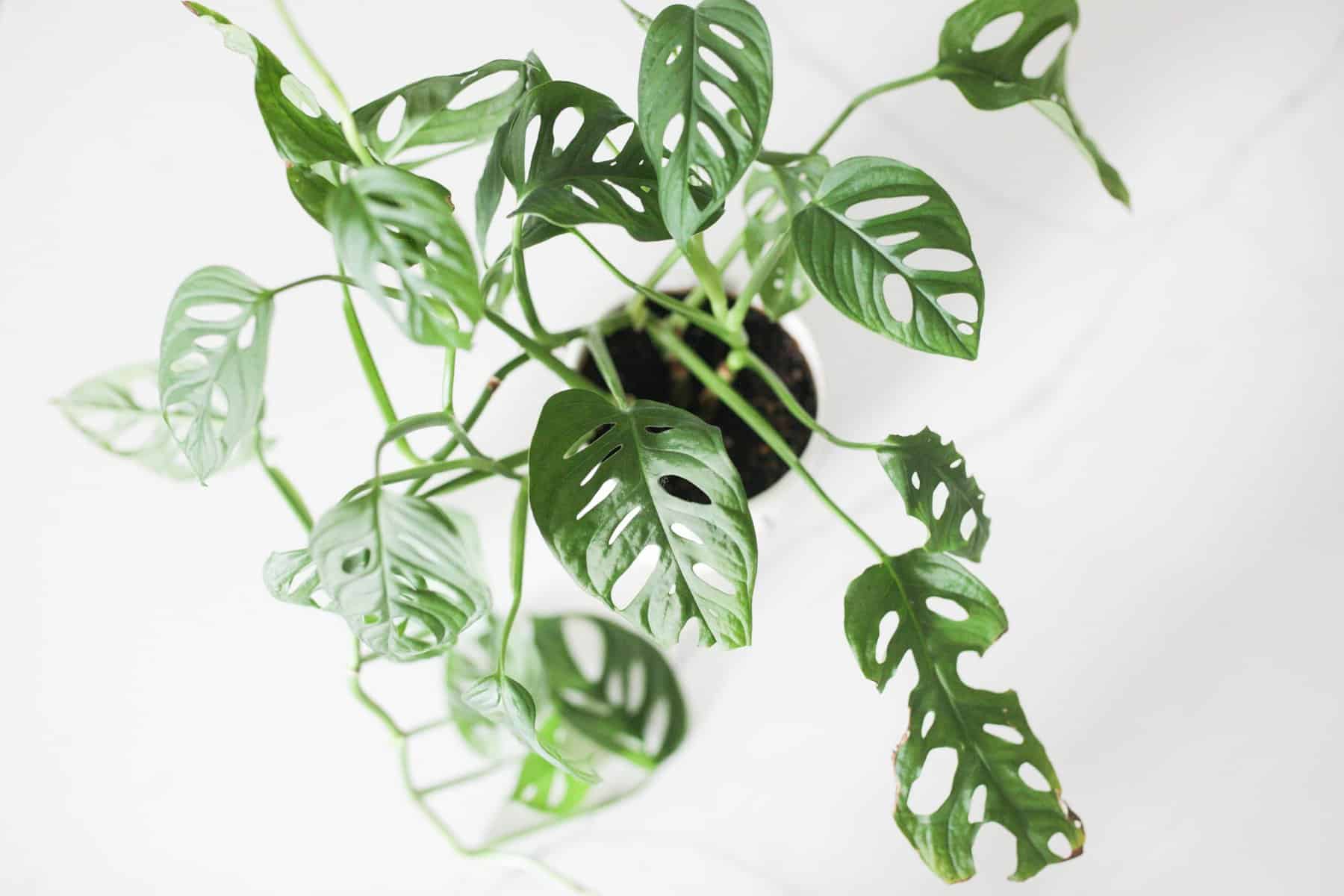
The Monstera adansonii is toxic to animals. If you have a dog or cat, it’s best to strategically place this houseplant where your pets can’t reach it. If they chew on its leaves, it can result in difficulty swallowing, excessive drooling, irritation, mouth swelling, and vomiting.
*Find non-toxic plants here!
Where to Buy
Monstera adansonii’s easy maintenance, unique leaves, and rapid growth make it one of the best houseplants to have around. With a little care and know-how, you won’t have to wait long before seeing it flourish and grow to a strong and beautiful plant.
FAQ
No, they’re fairly easy to care for plants! Giving them the right amount of light and water will help them be happy and healthy.
The Monstera adansonii isn’t a rare plant! You should be able to find them most places, even Amazon!
This plant is sometimes mistaken for a Monstera Obliqua which is a very rare plant.
Yes! They’re unique looking plants that are easy to grown indoors.
Let’s check out other Monstera plants!


Great article. Would like to save it and share it. Please send it to my email.